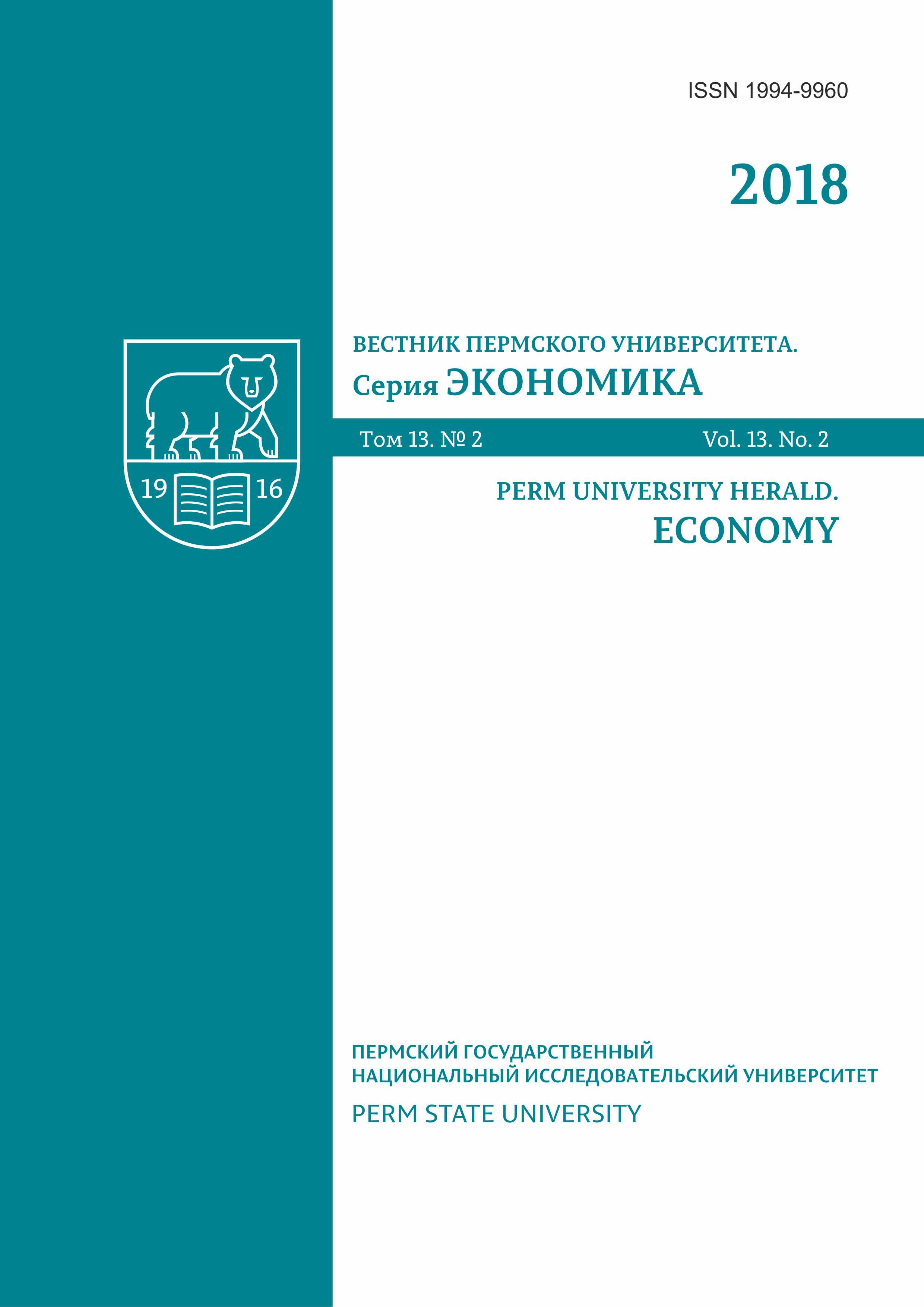Еmployer’s internal branding as a factor of operational efficiency increase: International experience and practice in Russia
DOI:
https://doi.org/10.17072/1994-9960-2018-2-264-281Abstract
Currently, corporations that are considered to be the world leaders in economy openly declare the importance of an employee satisfaction factor. However, in Russia despite the gradual brining of wages in correspondence to the average market level, investment in labour condition improvement, personnel development and social protection some companies face with personnel dissatisfaction and that the staff is not interested in the results of work. Correspondingly, the purpose of the article is to study the problems of operational efficiency increase using developed guidelines aimed at the strengthening of an employer’s internal brand based on an employee satisfaction factor. A model that correlates the categories of “operational efficiency”, “an internal brand of an employer”, and “employee satisfaction” has been developed based on the current approaches to the study of an employer’s brand. The model is a theoretical foundation of the original empirical research. The suggested method to assess an employee satisfaction rate and the model of an employer’s internal brand has been tested at a particular enterprise of the region (Perm branch of “Nestle Russia” LLC). In the research the methods of primary data collection (brain storm, interview and focus groups) and of secondary data collection (analysis of internal and external documents of the branch) have been used. The data analysis is based on the Delphi method, a content analysis and econometric modelling. The developed model of an employer’s internal brand is characterised by a differentiated effect on different categories of employees (white and blue collars) and by the differentiation of three zones of assessment of the importance of an employee satisfaction factor (low, average and high). A complex plan of priority actions to enhance an employer’s internal brand has been developed. The plan includes categories that require primary management decisions and will significantly and quickly increase personnel efficiency. Further studies will be devoted to the subsequent development of management tools for the formation of an employer’s internal brand on the basis of the employee satisfaction factor enhance in correlation to other factors that influence an enterprise operational efficiency.
Keywordsinternal brand, employer’s brand strengthening, employee satisfaction factor, operational efficiency, blue and white collar workers, a model of an internal brand, management algorithm, focus group, the Delphi method
For citationOshchepkov V.M., Tiutyk O.V., Maltseva N.V. Еmployer’s internal branding as a factor of operational efficiency increase: International experience and practice in Russia. Perm University Herald. Economy, 2018, vol. 13, no. 2, pp. 264–281. DOI 10.17072/1994-9960-2018-2-264-281
References1. Ambler T., Barrow S. The employer brand. Journal of Brand Management, 1996, vol. 4, iss. 3, pp. 185–206.
2. Barrow S., Mosley R. The employer brand: bringing the best of brand management to people at work. Chichester, W. Sussex, John Wiley & Sons, Ltd., 2006. 232 p.
3. Chunping Y., Xi L. The study on employer brand strategy in private enterprises from the perspective of human resource management. Energy Procedia, 2011, no. 5, pp. 2087–2091. doi: 10.1016/j.egypro.2011.03.360.
4. Miroshnichenko A.A. Hr-brend-optimal'nyi instrument v konkurentnoi bor'be na rynke truda aviatransportnoi otrasli Rossii [HR brand – optimal instrument in the competition of on labour market of civil aviation]. Nauchnyi vestnik MGTU GA [Civil Aviation High Technologies], 2011, no. 167, pp. 126–130. (In Russian).
5. King C., Grace D. Building and measuring employee–based brand equity. European Journal of Marketing, 2010, vol. 44, iss. 7, pp. 938–971.
6. Miles S.J., Mangold W.G., Asree S., Revell J. Assessing the employee brand: A census of one company. Journal of Managerial Issues, 2011, vol. 23, iss. 4, pp. 491‒507.
7. Priyadarshi P. Employer brand image as predictor of employee satisfaction, affective commitment and turnover. Indian Journal of Industrial Relations, 2011, vol. 46, no. 3, pp. 510‒522.
8. Rampl L.V. How to become an employer of choice: transforming employer brand associations into employer first-choice brands. Journal of Marketing Management, 2014, vol. 30, iss. 13-14, pp. 1486–1504.
9. Guo Z., Cao H., Li Y. Research on the evaluation of employer brand competitiveness based on fuzzy AHP method. 2010 International Conference on E-Product, E-Service and E-Entertainment. 2010.
10. Locke E. The nature and cause of job satisfaction. Handbook of industrial and organisational psychology, 1976, no. 1, pp. 1297‒1343.
11. Rad A.M.M., Yarmohammadian M.H. A study of relationship between managers' leadership style and employees' job satisfaction. Leadership in Health Services, 2006, vol. 19, iss. 2-3, pp. 11–28.
12. Jain P., Dahima V. Job satisfaction of employees working in power industry ‒ a study of Guru Gobind Singh Super Thermal Plant in India. The Journal of Management Awareness, 2015, vol. 18, iss. 2, pp. 38‒51.
13. Ellickson M.C., Logsdon K. Determinants of job satisfaction of municipal government employees. Public Personnel Management, 2002, vol. 3, iss. 31, pp. 343–358.
14. Prayogo L., Pranoto B.A.S., Purba H.H. Employee satisfaction analysis with human resource index. Management Science Letters, 2017, vol. 7, iss. 5, pp. 233–240. doi: 10.5267/j.msl.2017.2.003.
15. Lancaster G. Research methods in management: A concise introduction to research in management and business consultancy. Elsevier, Butterworth Heinemann, 2005. 271 p.
16. Trubin A.I. Udovletvorennost' trudom kak ekonomicheskaya kategoriya v sovremennoi teorii i praktike [Job satisfaction as an economic category in modern theory and practice]. XX Mezhdunarodnaya konferentsiya pamyati professora L.N. Kogana “Kul'tura, lichnost', obshchestvo v sovremennom mire: Metodologiya, opyt empiricheskogo issledovaniya”, 16‒18 marta 2017 g., Ekaterinburg [Proceedings of the XX international conference in memory of professor L.N. Kogan “Culture, personality, society in modern world: Methodology, experience of empirical research”, March 16–18, 2017, Ekaterinburg]. Ekaterinburg, UrFU Publ., 2017, pp. 1829‒1839. (In Russian).











